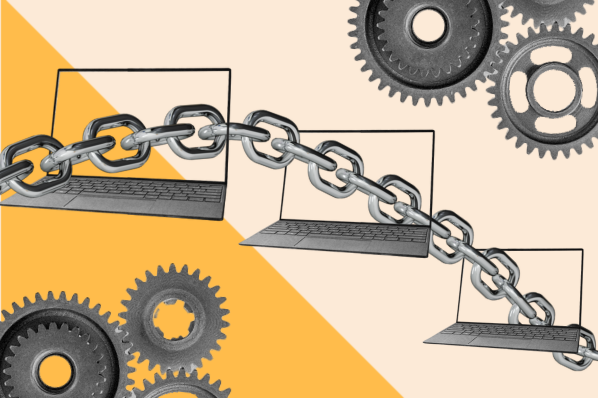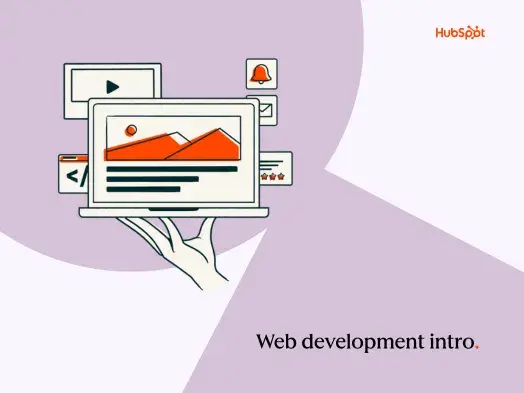Toolchain Explained
Toolchains often sound far more complex than they are; in truth, a software toolchain is simply a collection of various software such as programs like code editors set up to integrate. The goal of a toolchain is to simplify your software development process through streamlined software integration, allowing your tools to work together for you.
“I choose a lazy person to do a hard job. Because a lazy person will find an easy way to do it.” -Bill Gates
A bit crass, but a valid point all the same. Working hard is always right, but the trick is to work hard to make work easy. Toolchains help precisely facilitate that goal, enabling you to simplify your workflow by integrating your software setup.
Depending on your development type and preferred software, your toolchain setup can look many different ways. The truth is that most toolchain setups you see often will, and that is perfectly fine.
Leveraging Your Development Software
By setting up your own toolchain, you can reduce your workload. Archimedes said, “Give me a lever long enough and a fulcrum on which to place it, and I shall move the world.” At its core, this statement applies to every aspect of our lives, and software development is no different.
Setting up your toolchain starts with identifying the software you prefer for your development process. From there, you’ll want to identify which can be integrated to work together, look at alternatives if needed, and consider automation possibilities.
Through integrating your software you can often set up automated actions that will trigger when certain events take place. However, just as toolchains often look different, many have similarities, too. The popularity and flexibility of some software, such as Visual Studio and GitHub, means they are often found in many toolchains you will see.
Toolchain Example
Let’s discuss an example of a small toolchain that is very common in the development industry, which uses GitHub, and Visual Studio Code. Integrating these tools alone can save you hours of repetitive and potentially painstaking work. Visual Studio and GitHub can be set up to work together, allowing you to write code and update your GitHub repositories, rewind to previous versions make comparisons, run tests, and much more.
This setup can allow you to utilize both software programs from one interface, saving you from switching between the two repeatedly, which can consume a ton of time. That is only a small example of how it can help, but the benefits only snowball from there. Visual Code also offers a command line interface that will enable you to run commands from the same location where you are coding and maintaining your repository. You can install packages, run updates, add to your toolchain, and more from a single location.
Why do we use toolchains?
As mentioned above, toolchains can simplify your workflow in many ways. The key here is to identify what improvements will best benefit your development. A great example of this is the DevOps development methodology. In principle, DevOps takes the toolchain a step further by integrating the phases of development in the same way toolchains utilize software integration.
With this level of integration, you can create a setup with a domino effect in which one development task can trigger another, and then another, etc. Through integration, you add automation and really start to level up your development process. In a way, you can think of the toolchain as another software development tool you can leverage to your advantage.
Obviously, the advantages can vary in many ways with all the possible variations and software options. When deciding on your toolchain setup, be sure to consider all your options and decide based on what will be the most beneficial for your project.
When should you use software toolchains?
In most cases, development of any kind will benefit from a well-structured toolchain; however, learning when, where, and how to implement them is not always straightforward. First, you need to consider all stages of development and decide what kind of software will be needed. Then, you’ll want to compare the available software to find the right choices for your needs at each development lifecycle stage.

It is also worthwhile to try identifying the pain points in your development workflow and lifecycle. The best way to do this is to ask yourself some questions designed to probe for places where improvements can be made. Let’s look at some questions that can help identify your pain points.
Ask Yourself the Right Questions.
- Where are you spending a lot of time repeating tasks?
- Which tasks give you problems?
- How can you save the most time without sacrificing the quality of work?
- Where can you improve continuity between the phases of your development lifecycle?
- Are there ways to improve connectivity to your cloud services or collaborators?
These questions are a great place to start. However, there are many other questions that you may want to consider. Depending on your setup and development needs, the pain points you deal with may require different amounts or intensities of scrutiny. The truth is, only you can decide based on your needs, what questions to ask and how to set up your toolchain.
Workflows That Benefit From a Software Toolchain
As mentioned, I have worked with many programming languages and software development stacks. From web development to computer software, mobile application development, and even video game development, there’s more on that list, but you get the idea.
In all my experiences, toolchains have always proven beneficial for any type of software development I’ve worked with. In fact, I have multiple toolchains set up to work with each other.
For example, I have a software toolchain set up for each development life cycle phase. The webbed network of various workflows utilizing the same tools as others can create a very efficient integrated development environment.

Let’s look at some popular software in many toolchains that is compatible with many technologies.
Popular Toolchain Software
Let’s look at a few examples of commonly used software for the various stages of development in a project's lifecycle.
GitLabs
GitLab is a cloud-based software for source code, tracking, maintenance, and collaboration with other developers. It can be used with nearly any type of project, in this case, almost any software development or programming language. I have even seen it used to track artistic and writing projects by storing the documents in repositories, much like developers do with their project code and assets.
Visual Studio Code
Visual Studio is a code editor that is widely used and capable of integrating with many other software applications and technologies. It can be used to simplify your development process by providing a single location from which you can perform a multitude of tasks and operations. From debugging code to running git commands, file sharing to and from servers, and much more, Visual Studio is a powerful tool.
Jira
This software is used for issue tracking and project management across all stages of software development. Jira can help plan and track progress throughout development and easily integrates with many other software tools.
Mattermost
Mattermost is a tool built primarily for real-time remote collaboration with other developers; much like the other tools on this list, it is also useful across the entire development pipeline. Mattermost is growing in popularity due to its obvious usefulness and its ability to keep things moving consistently.
Puppet
Puppet is an excellent addition to any compatible software development process as it helps automate those tedious and monotonous infrastructure tasks. Nothing is worse than wasting time repeating steps that consume your precious time. Puppet gives you that time back by taking on the lift of tasks that can be automated, helping you be more productive.
Jenkins
Like Puppet, this software is used to automate repetitive tasks. However, Jenkins is used for server automation. Using Jenkins, you can speed up your software testing and building, maximize productivity, and improve your development lifecycle.
Prometheus
This software allows developers to monitor issues and bugs and more to enable quick and efficient responses to any problems that may arise. It can be used throughout the development process to help ensure continuous delivery. Prometheus also provides visual interfaces to simplify the monitoring process for developers to help them make sense of the data.
Lots of software is available for the various stages of your software development lifecycle. Each will offer different advantages and disadvantages; it is up to you to weigh your options and decide what's best for you.
Next Steps With Software Toolchains
From this point, the next steps should be to do more research, ask yourself some questions, and even look at tips and advice from other developers. The more you learn and improve your understanding of how the software available works, the better suited you will be to make the best decisions for your needs. I prefer the flexibility of software that works with many types of development. You may be better off with something that caters to more specific needs.
Website Development





![How to make a website with user accounts and profiles [with WordPress, Wix, and more]](https://53.fs1.hubspotusercontent-na1.net/hubfs/53/%5BUse%20(3).webp)
![How to build a Google Site that looks good and drives business [templates & examples]](https://53.fs1.hubspotusercontent-na1.net/hubfs/53/Website%20Redesign%20Terms.png)





